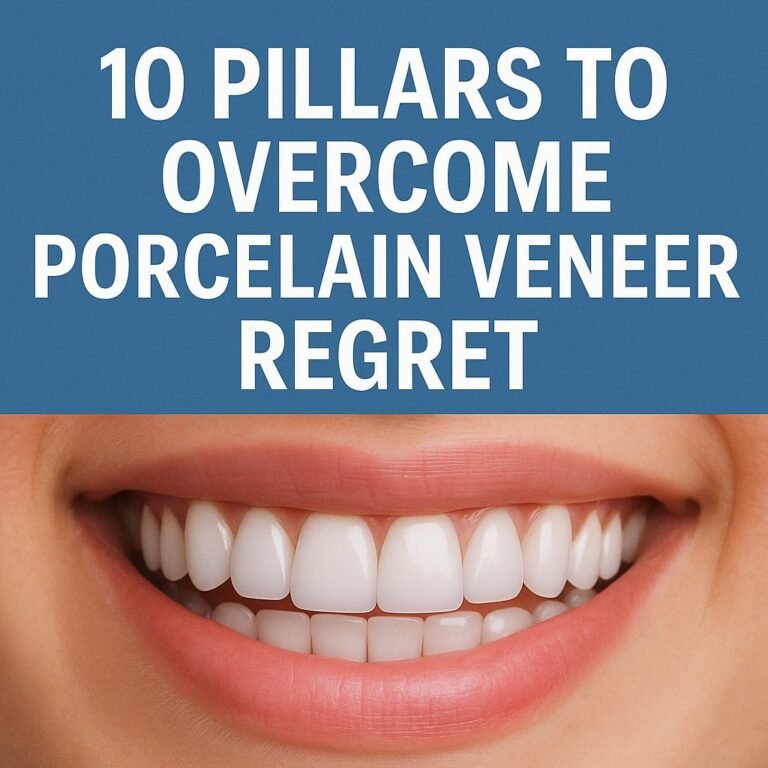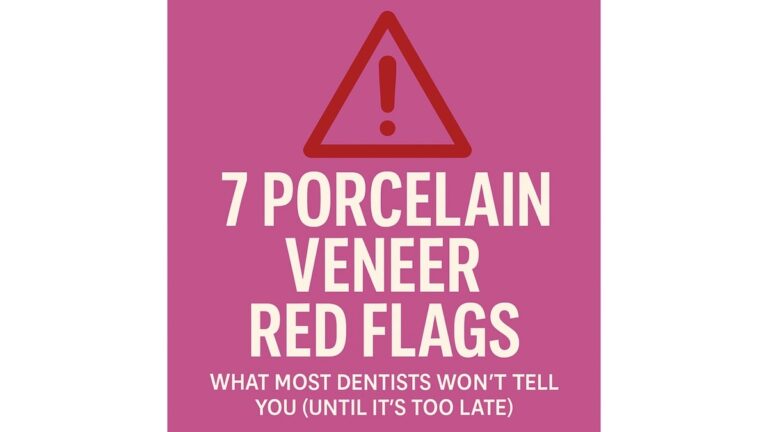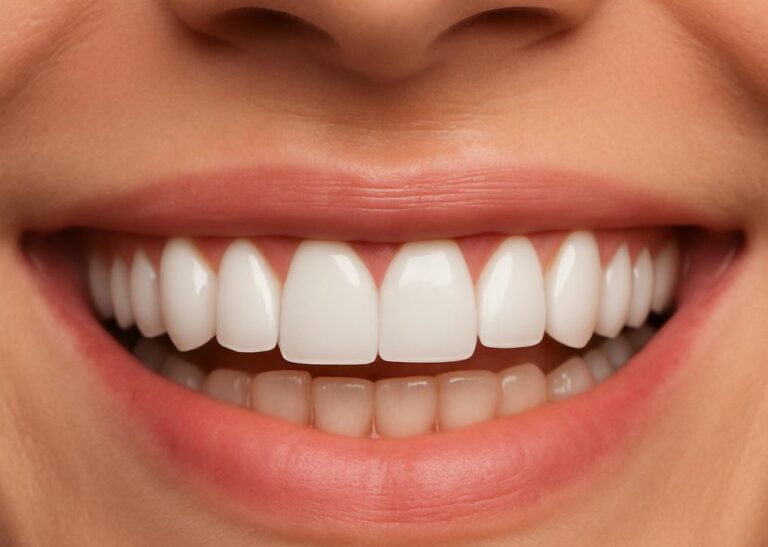The Veneer Reality: Not Permanent, Not Affordable, Not Risk-Free
Dentists often market porcelain veneers as a quick path to the perfect smile, but the reality is they are not permanent.
If you do not have deep pockets, they can wreck your finances.
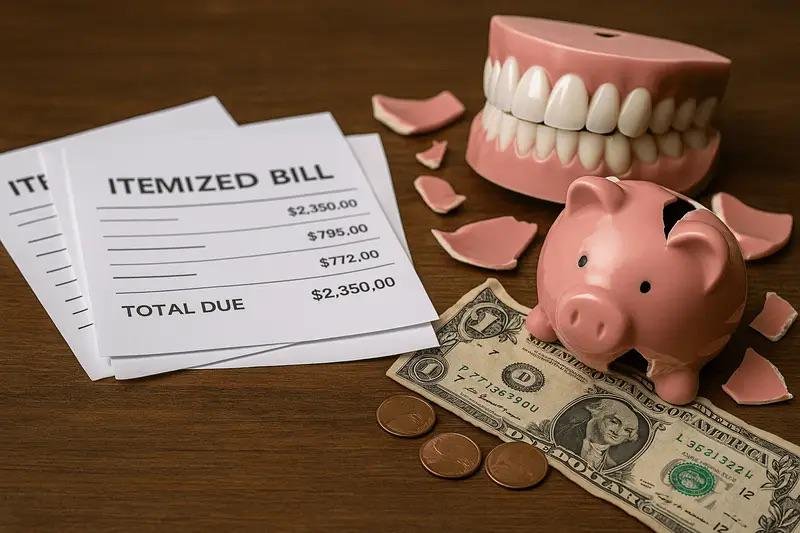
This article will not be popular.
Many will say if it boosts your confidence then do it and some will even dismiss this message as negativity.
But what you will read here comes from more than 20 years of listening to patients and people who have lived through the cycle of regret and endless replacements.
The Real Cost of Porcelain Veneers Per Tooth
In the United States, porcelain veneers cost between 2,000 and 3,000 per tooth.
A typical smile makeover is 6 veneers or 8 veneers, which comes out to: 6 veneers: $12,000 to $18,000 and 8 veneers: $16,000 to $24,000
And that is only for the first round. Veneers typically need replacing every 10 to 15 years, so over a lifetime you could end up paying $60,000 to $120,000 or more for repeat procedures.
No dentist will give you a 10 year, 15 year, or lifetime warranty. When they chip, crack, or stain, you pay again.
Porcelain Veneers vs Braces and Aligners
Years ago and still even today, dentists marketed porcelain veneers as an easy alternative to braces. Instead of spending time moving teeth into healthier positions, patients were told: If you do not want braces, just get veneers.
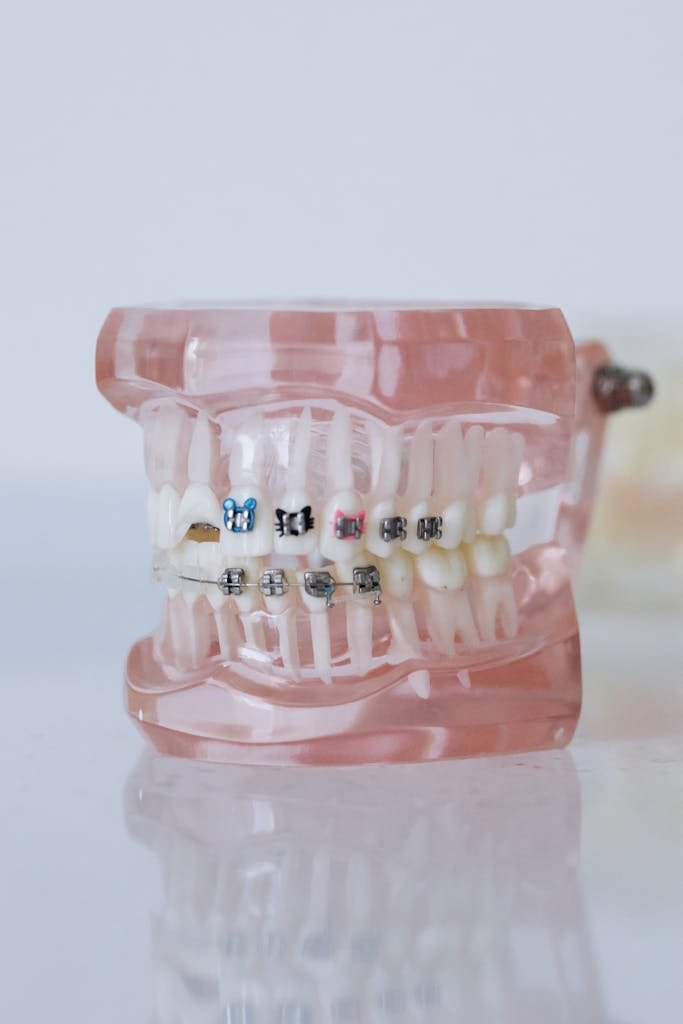
That advice was and still is a terrible idea. Braces or aligners straighten teeth while keeping your enamel intact.
Veneers on the other hand require shaving down healthy teeth and committing to a lifetime of replacements. One option preserves your smile, the other destroys it.
Even “No Prep” Veneers Are Irreversible
Dentists sometimes promote “no prep” or “minimal prep” veneers as if they are safer or reversible. The truth is they are not. Enamel is always altered.
Even when very little or zero is shaved away, the porcelain must be bonded to the surface of the tooth with acids and cements.
That bond is so strong that enamel can never return to its natural state.

And just like regular porcelain veneers, no prep and minimal prep versions follow the same rules: they chip, crack, or fail, and they must be replaced every 10 to 15 years.
Patients end up in the same expensive replacement cycle.
How Dentists Downplay the Cost
Dentists often make veneers sound affordable by pointing patients to CareCredit or other financing plans.
But paying in monthly installments does not change the math. You are still responsible for tens of thousands over time.
When Porcelain Veneers Might Make Sense
Porcelain veneers can be a last resort option in very specific cases. For example, if someone has severely stained, cracked, or damaged teeth that cannot be restored by safer methods.
They may also be reasonable for older patients, 65 and older, who may only need one round in their lifetime.

But they should not be used on people with healthy teeth. Shaving down enamel to place porcelain veneers locks you into a replacement cycle for life.
Not an Investment
Some dentists even frame veneers as an investment in yourself. But unlike a true investment, veneers do not grow in value.

They lose value immediately because you have permanently damaged healthy teeth and guaranteed ongoing replacement costs.
Spending $20,000 today on 8 veneers does not give you $40,000 later. It traps you into spending another $20,000 in 10 to 15 years just to maintain them.
The Trap of Instant Gratification
We live in a world of instant gratification where people chase quick results, get rich quick schemes, and social media validation.
Veneers have become another trap in that cycle, a quick fix for instant happiness that fades with time.
A smile makeover may look flawless in selfies today, but it does not solve deeper insecurities, and it certainly does not erase the financial and dental consequences waiting down the road.
Safer, More Affordable Alternatives to Porcelain Veneers
Additive enhanced composite bonding or veneers usually cost $5,000 to $20,000 for 10 teeth. That is similar to porcelain up front, but the difference is in the long run:
- They do not follow the 10 to 15 year replacement rule:
- They can be repaired and touched up, not fully replaced
- They are additive only, meaning no healthy enamel is permanently destroyed
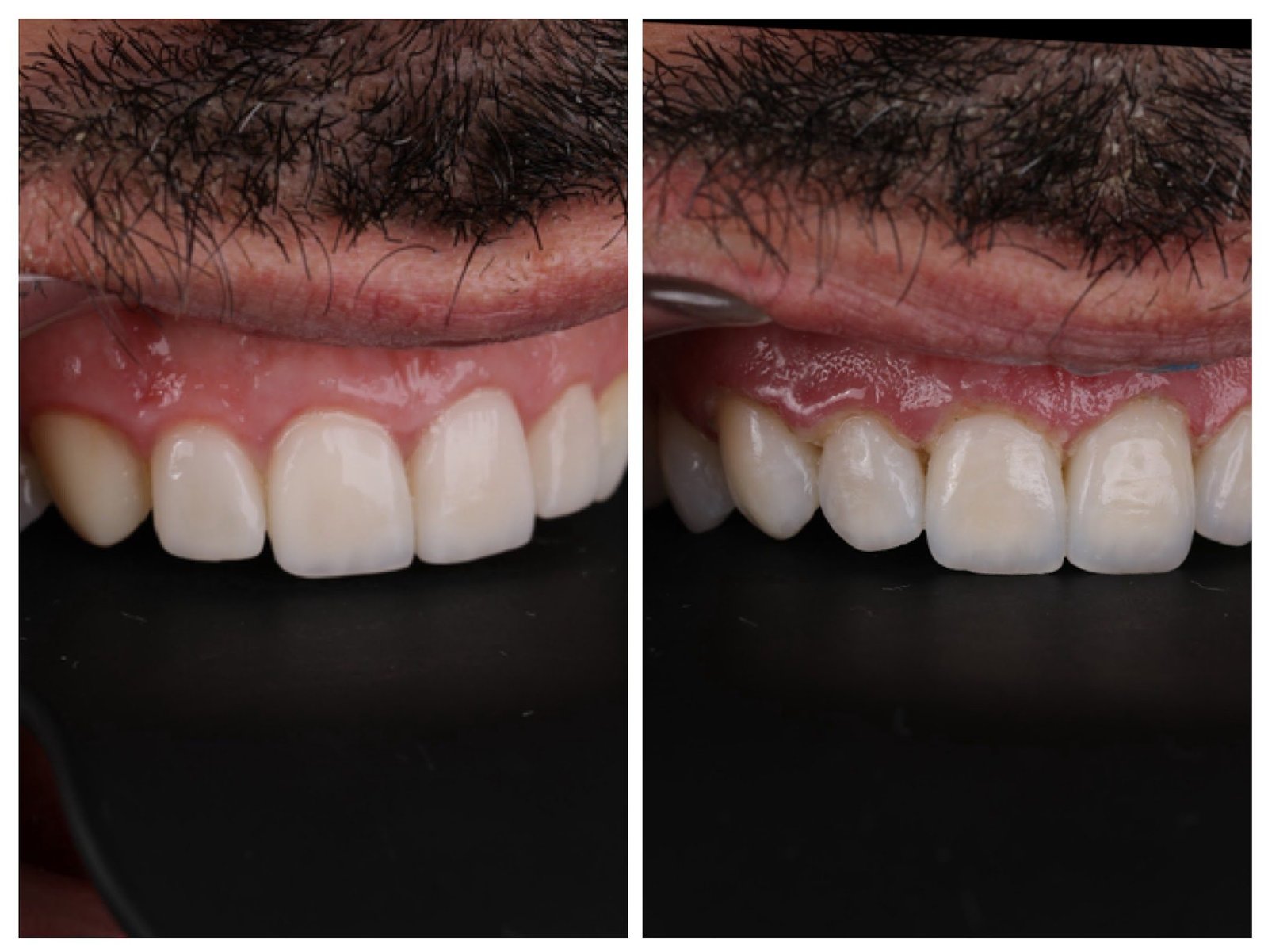
Full Set of Porcelain Veneers Cost: Try Our Calculator
To make this even clearer, we created the BBV Lifetime Porcelain Veneer Cost Calculator.
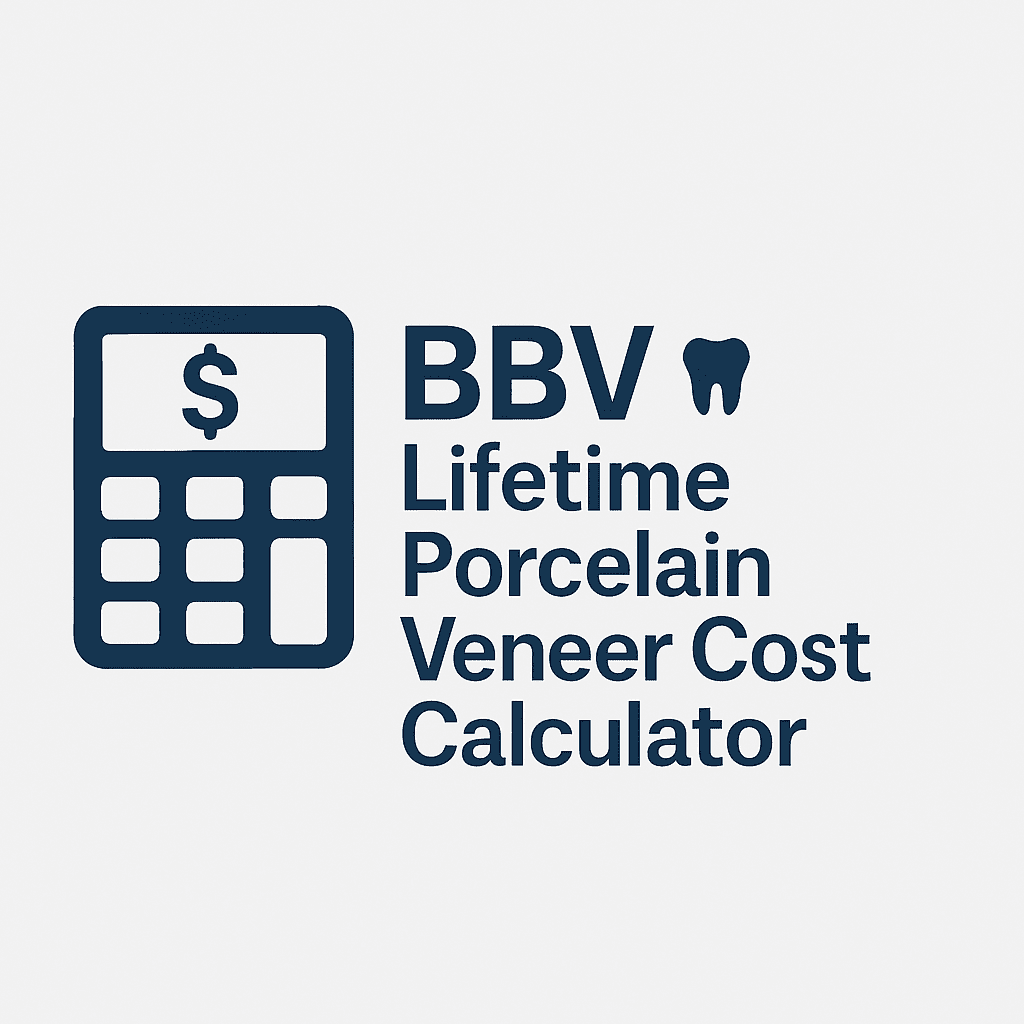
It lets you see the total cost over your lifetime. Just enter how many veneers you want, your age, how long you think you will live, and even add dental inflation if you want.
👉 Try it here: BBV Lifetime Porcelain Veneer Cost Calculator
Protect Your Smile
Dentists push porcelain because it brings them huge upfront profits.
Financing plans make it seem manageable, and social media makes it look glamorous, but the reality is different.
Porcelain veneers are not an investment. They are a permanent commitment to risk, expense, and regret on healthy teeth.
Braces and aligners may take time, but they protect your natural teeth. Additive enhanced composite resin veneers can also be a safer step forward. Jumping straight into porcelain veneers, however, could be a disaster.

Disclaimer: This content is for informational and commentary purposes only. It reflects observations and opinions based on publicly available images and does not constitute medical advice, diagnosis, or criticism of any individual’s personal choices. Cosmetic dentistry outcomes can vary, and anyone considering treatment should consult with a licensed dental professional.
If you have questions about this article, need help understanding your options, or want to know what to ask during a consultation, we’re here to help. Just leave us a message — even a quick question like:
- “Do you know any qualified dentists who offer enhanced composite resin veneers?”
- “How do I know if this is right for me?”
- “What are the typical costs among providers for enhanced composite resin veneers?”
- “What should I ask my dentist before starting treatment?”
- “Is there a way to tell if my teeth are healthy enough for this type of veneer?”
- “What’s the difference between traditional bonding and enhanced composite resin?”
Every person’s case is unique, and while we’ll do our best to answer your questions and share helpful insights, always consult a licensed dental professional before making any treatment decisions.


